“My factory man told me that they are bringing truckloads of Polish beef into the plant and putting the Bord Bia logo on it.”
The practice of branding is thought to have started with the ancient Egyptians, who branded their livestock as early as 2,700 BCE. Branding was used to differentiate one person’s cattle from another by means of a distinctive symbol burned into the animal’s skin.
When you go to the supermarket now, most products will have a brand mark, logo or claim purporting to prove its superiority to the product beside it. It is now one of the last ways to differentiate a product from its competitors.
One way to a brand in Ireland is to join a recognised brand of which there are a number.
The Bord Bia Quality Mark is probably the most recognisable logo that appears on Irish food products 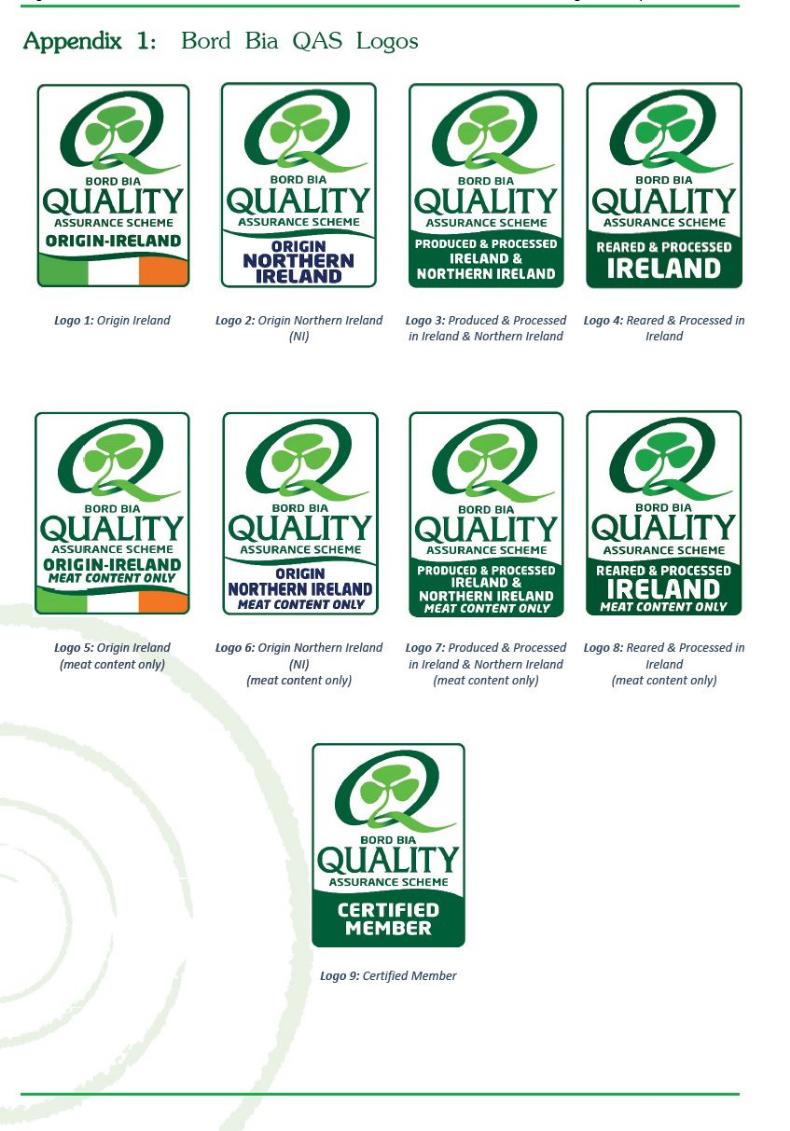
and straight off the bat, meat cannot be imported from Poland and labelled as “Irish” or carry the quality assurrance logo. Bord Bia is a semi-state agency, funded by both state and industry. Under EU state aid rules, member state resources cannot be used for advertising or promotional activity that could distort competition by favouring Irish products over those produced in another EU country.
Therefore, Bord Bia is not permitted to run campaigns that explicitly encourage consumers to ‘buy Irish’. What they can do, however, is promote Irish produce on the basis of its sustainability and quality credentials.
State aid rules also stipulate that advertising activities undertaken by Bord Bia in the EU must be part-funded by industry. For Quality Mark promotions run within the EU, 50% industry funding is required, with the remainder matched by State funds.
Bord Bia employs an independent company (Capita Customer Solutions, previously SWS) to carry out over 80,000 checks on farms each year. Farmers are represented on the quality assurance boards and technical advisory committees of each of the schemes through their farm organisations.
It is a requirement of the Bord Bia programme that all Quality Assured product must be identified as such at every stage of the process. However, food processing is complicated and therefore there are nine versions of the QA logo to ensure clarity.
The National Dairy Council (NDC) guarantee appears on 350 milk and cream products. These products must be sourced and processed in the Republic of Ireland and meet all of the necessary NDC licensing criteria and audits. Once an entity is a member of the NDC, pays its levy and complies with the terms of an executed trade mark licence, it is permitted to use the mark. There is an annual administration contribution. The NDC has a trade mark monitoring committee to monitor and control the use of the trade mark and to ensure conformance to the rules and regulations of the licence agreement.
Guaranteed Irish is potentially the oldest symbol that most of us will recognise, at 50 years old.
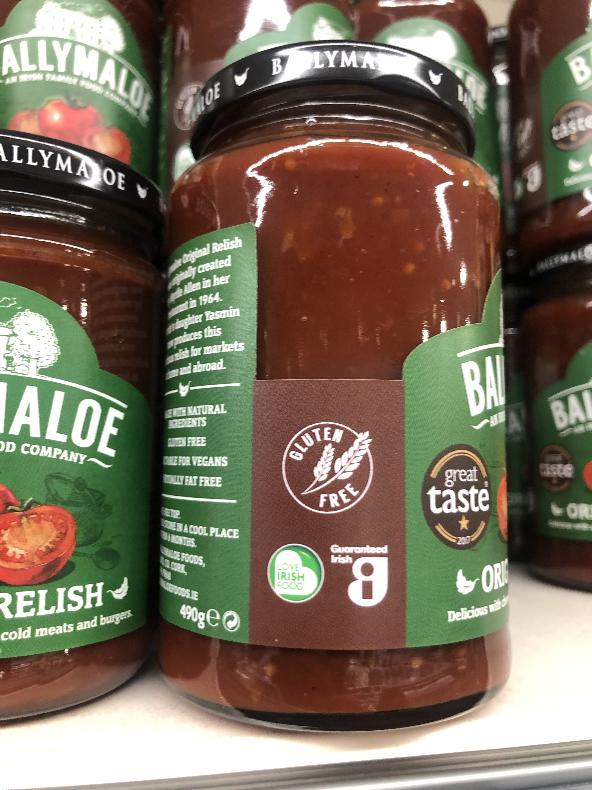
Gluten-free, Love Irish food and the Guaranteed Irish 'G' on a jar of relish.
The “G” is not just a food label but available across all sectors. To carry the symbol, the product or service must satisfy three criteria.
1 Provision of quality sustainable jobs in Ireland. 2 The business supports local economies and contributes back into the community. 3 Provenance – that the company genuinely operates in and adds value in Ireland. A minimum of 50% of the added value must be applied in Ireland. However, that said, if a company cannot satisfy these three criteria, they can still join the programme as the “Guaranteed Irish Board reserves the right to determine membership eligibility at its sole discretion”.
Love Irish is an association that has a registered logo that can be used on the labelling of food to indicate to consumers that the final food was manufactured in the Republic of Ireland, using local ingredients where they are available, but which might not be of Irish origin.
The example that it gives on its website is: “Take your tea bag for example. Now, the tea leaves can’t be grown in Tipperary, but the tea is graded and made into a ready-to-use tea bag for you”.
Again, specific criteria apply which is controlled by the Love Irish association.
Regularly seen and regulated
Organic
Where a food meets the criteria to be called ‘organic’, the label must bear the code number of the organic control authority along with the EU organic logo. Organic foods must meet the legislative criteria (strict rules around the use of antibiotics and fertilizers and GM is banned) and certified by one of the certification and inspection bodies designated by DAFM.
Free range
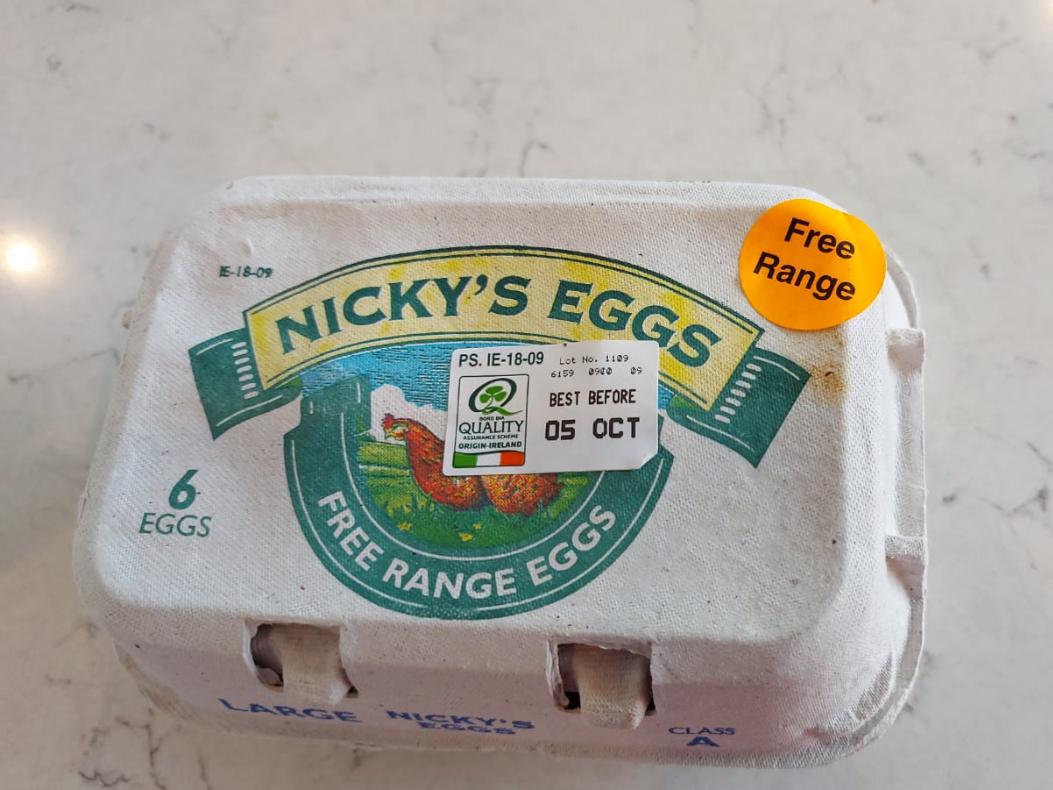
Free-range eggs.
The term ‘free range’ is legally defined for two foods – eggs and poultry meat. Therefore, only these two types of food can be called ‘free range’ and only where they meet the requirements set out for use of this term in the relevant legislation. ‘Cage free’ is not a defined farming system although many of the retailers that responded to us said that they are transitioning to a “cage-free” system in the future.
Gluten free
This legislation sets down limits for gluten and where a food is labelled as ‘gluten free’, it should not contain more than 20mg/kg of gluten.
Open to interpretation
Natural
As discussed in article 1 the term “natural” can be used on a label, when the product is in its natural form, with no additional ingredients or additives, and subject to no processing other than physical processes such as cooking.
Artisan
Not legally regulated but the FSAI say that it should only be used when a product can legitimately claim that it is made in limited quantities by skilled craftspeople, the process is not fully mechanised, is traditional and made at a single location with local and seasonal ingredients.
Traditional
Should only be used on foods that can legitimately claim to meet one of the following criteria: Food made to an authentic recipe 30 years in existence or the method of preparation has existed for more than 30 years.
Local
According to the FSAI guidance note “local” is within a 100 km of the manufacturing/food service establishment.
Thread carefully - could be misleading
Non-GMO
Non- GMO or GM free labelling is not mandatory and so when it appears on food labels, it falls under Article 36 of FIC (voluntary information). This information must not mislead the consumer. For example, it is not permitted to declare ‘GM free on the labels of meat, milk or eggs, since food derived from GM animals are not authorised in the EU.
Superfoods
In 2007 the EU banned the use of the word “superfood” on labels unless that product had a health claim that is “clear, accurate and based on scientific evidence”, and it must explain why the food is good for the health of consumers.
Walk away - should not be seen on pack
No added hormones
Strict rules apply in the EU for the use of artificial growth hormones and recombinant BST are banned in the EU so as the animals should not be treated with the hormones, they should not be present in the first case and so products should not be labelled as ‘no hormones’.
No antibiotics
Again, strict controls apply to the use of antibiotics and at slaughter the herd keeper signs the food chain information form declaring that the animal does not have antibiotics in its system. Therefore, it would be misleading to declare ‘no antibiotics’ on a label.
The International dimension
Grassfed
There is currently no legal definition, but according to the FSAI “it should be correct and not misleading to the final consumer.” Glanbia is working with A Greener World (AGW) in the US for animal welfare certification of its Truly Grassfed brand. An additional accreditation offered by AGW is “certified Grassfed” where animals (in American and Canada) are fed a 100% grass and forage diet and raised outdoors.
Fairtrade
The Fairtrade mark is carried on a range of products from coffee to sugar to chocolate to jams. International Fairtrade standards aim to ensure products are socially and economically fair and environmentally responsible. Key to this include the payment of a minimum price and a premium. As well as their own international standard, they aim to meet UTZ certified sustainability standards which merged with the Rainforest Alliance, a mark found on the same range of products.
Rainforest Alliance
Around 44,000 products with the Rainforest Alliance Certified seal or UTZ label are available around the world. Two of Ireland’s top tea brands, Barry’s and Lyons, are Rainforest Alliance Certified and many retailers, including Aldi and Tesco, carry Rainforest Alliance Certified ingredients in their private-label brands. You can also grab a Rainforest Alliance Certified coffee on the go, through Frank and Honest (Musgraves) and Costa Coffee.
Irish quality assurance schemes have pivoted to sustainability messaging over the last number of year. Unlike Fairtrade however, the payment of a minimum price and a premium does not factor.
Nike advertising sells you the vision of emulating the sports stars who have “just done it”. Can you dunk a basketball from halfway up the court because you are wearing Air Max shoes? Probably not! But it appears we are comfortable with that half-truth when it comes to our runners. But should we be comfortable with half-truths when it comes to our food?
The New York Times previously described marketing as “the art of telling stories so enthralling that people lose track of their wallets.” Governments will legislate but in the war for shelf space, there is always a danger of label claims being “fake news”. That said, the factory that imports meat and labels it with an Irish quality assurance logo is breaking the law.
“My factory man told me that they are bringing truckloads of Polish beef into the plant and putting the Bord Bia logo on it.”
The practice of branding is thought to have started with the ancient Egyptians, who branded their livestock as early as 2,700 BCE. Branding was used to differentiate one person’s cattle from another by means of a distinctive symbol burned into the animal’s skin.
When you go to the supermarket now, most products will have a brand mark, logo or claim purporting to prove its superiority to the product beside it. It is now one of the last ways to differentiate a product from its competitors.
One way to a brand in Ireland is to join a recognised brand of which there are a number.
The Bord Bia Quality Mark is probably the most recognisable logo that appears on Irish food products 
and straight off the bat, meat cannot be imported from Poland and labelled as “Irish” or carry the quality assurrance logo. Bord Bia is a semi-state agency, funded by both state and industry. Under EU state aid rules, member state resources cannot be used for advertising or promotional activity that could distort competition by favouring Irish products over those produced in another EU country.
Therefore, Bord Bia is not permitted to run campaigns that explicitly encourage consumers to ‘buy Irish’. What they can do, however, is promote Irish produce on the basis of its sustainability and quality credentials.
State aid rules also stipulate that advertising activities undertaken by Bord Bia in the EU must be part-funded by industry. For Quality Mark promotions run within the EU, 50% industry funding is required, with the remainder matched by State funds.
Bord Bia employs an independent company (Capita Customer Solutions, previously SWS) to carry out over 80,000 checks on farms each year. Farmers are represented on the quality assurance boards and technical advisory committees of each of the schemes through their farm organisations.
It is a requirement of the Bord Bia programme that all Quality Assured product must be identified as such at every stage of the process. However, food processing is complicated and therefore there are nine versions of the QA logo to ensure clarity.
The National Dairy Council (NDC) guarantee appears on 350 milk and cream products. These products must be sourced and processed in the Republic of Ireland and meet all of the necessary NDC licensing criteria and audits. Once an entity is a member of the NDC, pays its levy and complies with the terms of an executed trade mark licence, it is permitted to use the mark. There is an annual administration contribution. The NDC has a trade mark monitoring committee to monitor and control the use of the trade mark and to ensure conformance to the rules and regulations of the licence agreement.
Guaranteed Irish is potentially the oldest symbol that most of us will recognise, at 50 years old.

Gluten-free, Love Irish food and the Guaranteed Irish 'G' on a jar of relish.
The “G” is not just a food label but available across all sectors. To carry the symbol, the product or service must satisfy three criteria.
1 Provision of quality sustainable jobs in Ireland. 2 The business supports local economies and contributes back into the community. 3 Provenance – that the company genuinely operates in and adds value in Ireland. A minimum of 50% of the added value must be applied in Ireland. However, that said, if a company cannot satisfy these three criteria, they can still join the programme as the “Guaranteed Irish Board reserves the right to determine membership eligibility at its sole discretion”.
Love Irish is an association that has a registered logo that can be used on the labelling of food to indicate to consumers that the final food was manufactured in the Republic of Ireland, using local ingredients where they are available, but which might not be of Irish origin.
The example that it gives on its website is: “Take your tea bag for example. Now, the tea leaves can’t be grown in Tipperary, but the tea is graded and made into a ready-to-use tea bag for you”.
Again, specific criteria apply which is controlled by the Love Irish association.
Regularly seen and regulated
Organic
Where a food meets the criteria to be called ‘organic’, the label must bear the code number of the organic control authority along with the EU organic logo. Organic foods must meet the legislative criteria (strict rules around the use of antibiotics and fertilizers and GM is banned) and certified by one of the certification and inspection bodies designated by DAFM.
Free range

Free-range eggs.
The term ‘free range’ is legally defined for two foods – eggs and poultry meat. Therefore, only these two types of food can be called ‘free range’ and only where they meet the requirements set out for use of this term in the relevant legislation. ‘Cage free’ is not a defined farming system although many of the retailers that responded to us said that they are transitioning to a “cage-free” system in the future.
Gluten free
This legislation sets down limits for gluten and where a food is labelled as ‘gluten free’, it should not contain more than 20mg/kg of gluten.
Open to interpretation
Natural
As discussed in article 1 the term “natural” can be used on a label, when the product is in its natural form, with no additional ingredients or additives, and subject to no processing other than physical processes such as cooking.
Artisan
Not legally regulated but the FSAI say that it should only be used when a product can legitimately claim that it is made in limited quantities by skilled craftspeople, the process is not fully mechanised, is traditional and made at a single location with local and seasonal ingredients.
Traditional
Should only be used on foods that can legitimately claim to meet one of the following criteria: Food made to an authentic recipe 30 years in existence or the method of preparation has existed for more than 30 years.
Local
According to the FSAI guidance note “local” is within a 100 km of the manufacturing/food service establishment.
Thread carefully - could be misleading
Non-GMO
Non- GMO or GM free labelling is not mandatory and so when it appears on food labels, it falls under Article 36 of FIC (voluntary information). This information must not mislead the consumer. For example, it is not permitted to declare ‘GM free on the labels of meat, milk or eggs, since food derived from GM animals are not authorised in the EU.
Superfoods
In 2007 the EU banned the use of the word “superfood” on labels unless that product had a health claim that is “clear, accurate and based on scientific evidence”, and it must explain why the food is good for the health of consumers.
Walk away - should not be seen on pack
No added hormones
Strict rules apply in the EU for the use of artificial growth hormones and recombinant BST are banned in the EU so as the animals should not be treated with the hormones, they should not be present in the first case and so products should not be labelled as ‘no hormones’.
No antibiotics
Again, strict controls apply to the use of antibiotics and at slaughter the herd keeper signs the food chain information form declaring that the animal does not have antibiotics in its system. Therefore, it would be misleading to declare ‘no antibiotics’ on a label.
The International dimension
Grassfed
There is currently no legal definition, but according to the FSAI “it should be correct and not misleading to the final consumer.” Glanbia is working with A Greener World (AGW) in the US for animal welfare certification of its Truly Grassfed brand. An additional accreditation offered by AGW is “certified Grassfed” where animals (in American and Canada) are fed a 100% grass and forage diet and raised outdoors.
Fairtrade
The Fairtrade mark is carried on a range of products from coffee to sugar to chocolate to jams. International Fairtrade standards aim to ensure products are socially and economically fair and environmentally responsible. Key to this include the payment of a minimum price and a premium. As well as their own international standard, they aim to meet UTZ certified sustainability standards which merged with the Rainforest Alliance, a mark found on the same range of products.
Rainforest Alliance
Around 44,000 products with the Rainforest Alliance Certified seal or UTZ label are available around the world. Two of Ireland’s top tea brands, Barry’s and Lyons, are Rainforest Alliance Certified and many retailers, including Aldi and Tesco, carry Rainforest Alliance Certified ingredients in their private-label brands. You can also grab a Rainforest Alliance Certified coffee on the go, through Frank and Honest (Musgraves) and Costa Coffee.
Irish quality assurance schemes have pivoted to sustainability messaging over the last number of year. Unlike Fairtrade however, the payment of a minimum price and a premium does not factor.
Nike advertising sells you the vision of emulating the sports stars who have “just done it”. Can you dunk a basketball from halfway up the court because you are wearing Air Max shoes? Probably not! But it appears we are comfortable with that half-truth when it comes to our runners. But should we be comfortable with half-truths when it comes to our food?
The New York Times previously described marketing as “the art of telling stories so enthralling that people lose track of their wallets.” Governments will legislate but in the war for shelf space, there is always a danger of label claims being “fake news”. That said, the factory that imports meat and labels it with an Irish quality assurance logo is breaking the law.







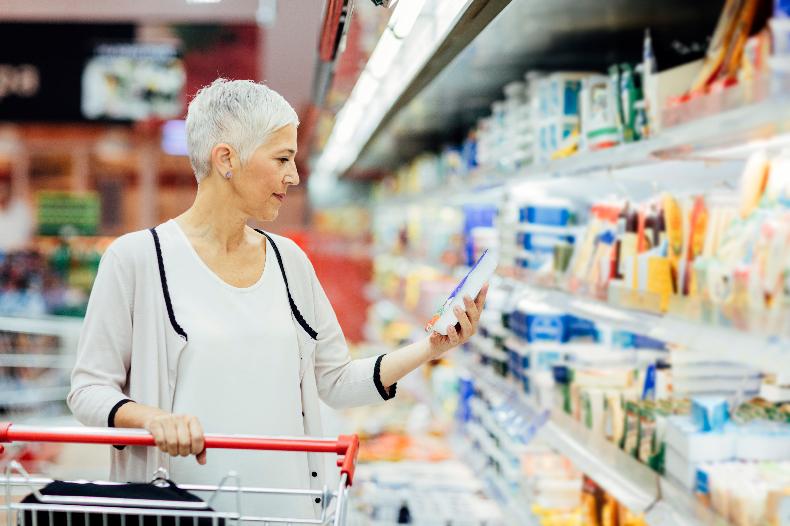
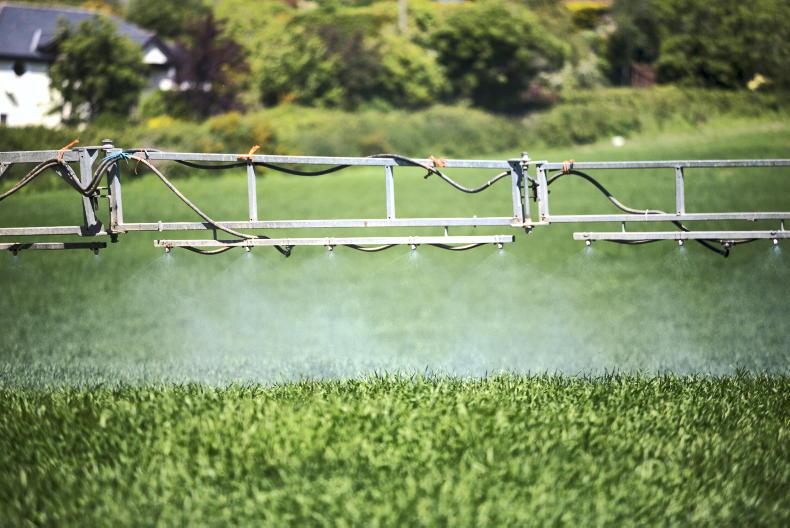

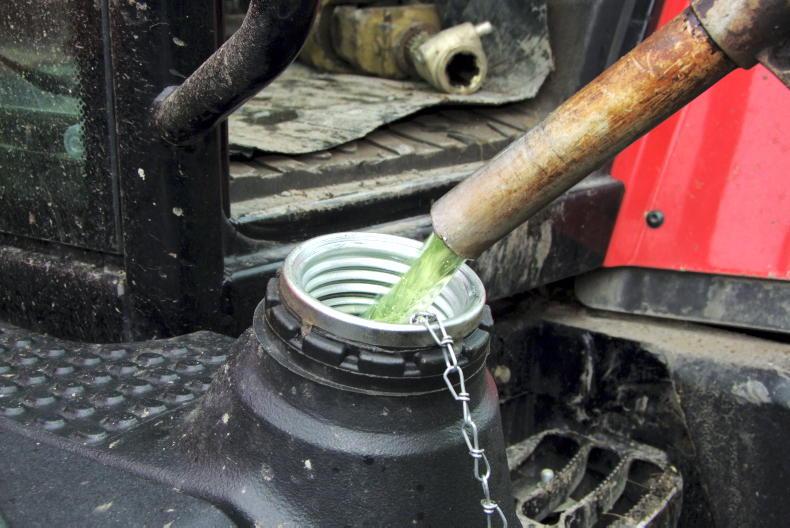
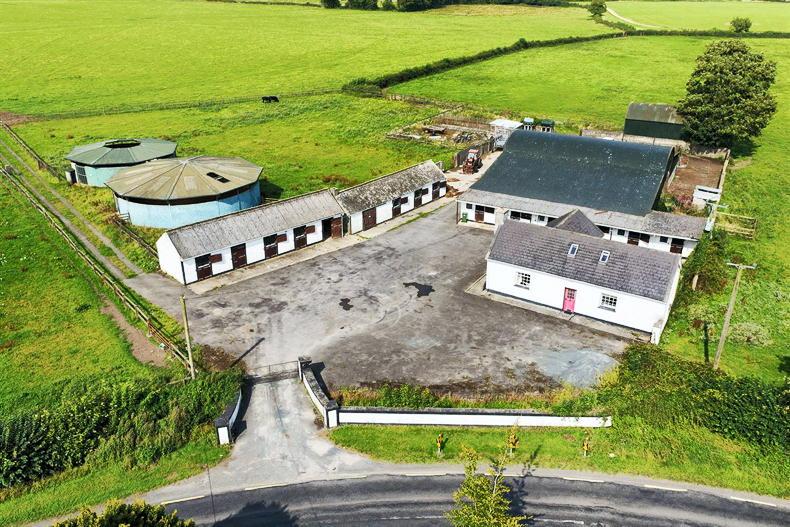

SHARING OPTIONS